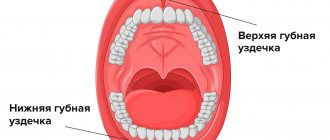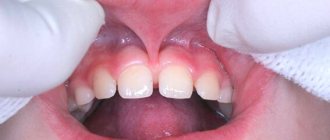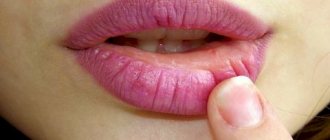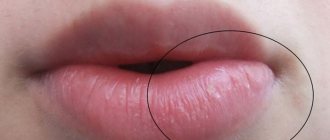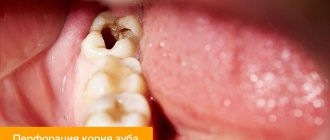Lip laceration: first aid
Pre-processing is carried out in the following sequence:
- Stop bleeding - cold is applied to the lip, followed by hemostatic agents to reduce bleeding. It is recommended to treat the wound with hydrogen peroxide to prevent inflammation.
- Reassure the person and record the time of the wound formation - if there is a large loss of blood, hemorrhagic and painful shock can occur, so talk to the victim and maintain communication with him before coming to the hospital.
- Reducing pain in the wound - the patient can be given any painkiller (Analgin, Nurofen), which will reduce pain symptoms and improve the general condition.
How to properly freeze a wound on the lip
In the absence of breathing and a threadlike pulse, it is necessary to carry out a series of resuscitation measures aimed at maintaining vital processes in the body. Artificial respiration is performed through the nose, as the wound site may become infected. Indirect cardiac massage allows you to avoid clinical death, but if performed incorrectly, complications can arise.
If the patient is unconscious, place him on his side so that if the wound bleeds, blood does not enter the stomach through the mouth. Severe painful shock can cause vomiting, so lying on your side minimizes the likelihood of vomit entering the respiratory system.
Causes
Injuries to the tissues of the rim (labrum) surrounding the shoulder rosette can occur either as a result of acute trauma or as a consequence of repetitive movements of the shoulder. For example, damage to the labrum can occur in the following cases:
- Falling on an outstretched arm
- Direct hit to the shoulder
- A sudden pull with the hand, for example, when trying to lift a heavy object
- Excessive overhead movement of the arm
Labral tears can also occur in throwers or weightlifters and result from excessive repetitive stress on the shoulder. In weightlifters, labral tears can also occur as a result of overuse during exercises such as barbell, bench, or standing presses. Posterior rotator cuff weakness can contribute to labral tears. Labral tears can occur as a result of acute injuries such as a fall on an outstretched arm, but also occur in athletes where there is intense shoulder movement (eg, golfers).
Lacerated wound of the lip: main stages of treatment
Wounds on the lips caused by a blow or other minor mechanical injury can be treated at home using special wound-healing creams and ointments. If the parting of the edges exceeds 1 cm, it will be necessary to apply sutures, which are performed by a doctor under sterile conditions.
Drug therapy
The healing time of a wound on the lip depends on the degree of its damage and the specifics of the body’s regeneration. On average, the entire process takes 2-3 weeks. To speed up healing and facilitate the entire process, the following groups of drugs are used:
Cleft lip: about scars after surgery
When performing plastic surgery of the upper lip and nose (primary or reconstructive cheilorhinoplasty), the surgeon cuts and then stitches the skin, muscles and mucous membranes. Consequently, scarring will occur throughout the incisions.
Scar formation is a natural and inevitable process that takes at least 6–8 months. During this period, the shape of the upper lip and nose may change: the upper lip is pulled up along the line of the scar, and the wing of the nose - to the nasal septum, causing a decrease in the diameter of the nasal passage, and, as a result, deformation of the nose.
Over time, the scars become less dense, paler, and the contours of the upper lip and nose take on their postoperative shape. However, not in all cases this natural process can end with the successful result expected by everyone.
A number of factors surrounding your baby, namely: sunlight, hard objects and toys, sharp corners and swings, can have an extremely negative effect on scar formation. Realizing how much the result of the operation depends on the quality of the formed scar, we strongly advise you to follow a number of our recommendations in the postoperative period.
Remember: following these recommendations will determine what your baby will be like in many years!
- Avoid sun rays: use high-protection sunscreens for children, wear panama hats and hats with a visor, walk in shady parks, avoid trips to the sea and hot regions.
- Avoid traumatizing the upper lip with any objects: fix the baby’s hands, remove hard toys, supervise the child everywhere, especially if he is already sitting or walking.
- When placing your baby on his tummy, be careful! Try to avoid lying on your stomach, especially while sleeping, for as long as possible.
- Use anti-scarring agents, such as Contractubex gel, Mederma and other gels based on liquid silicone.
- For 6 months, no matter how difficult it is for you to fight scars, use nasal inserts, this will avoid deformation of the nose and stenosis (complete disappearance) of the nasal passage.
- Consult the surgeon operating on you on all questions related to the condition of your child’s scar. You can always discuss with your doctor possible methods of treating and preventing scars: physiotherapy (electrophoresis with lidase), beech therapy and others.
- Remember: you should use procedures that hide scars (resurfacing, tattooing) only after prior consultation with the surgeon operating on your child.
Lip laceration: recommendations
The wound should be protected with a bandage, under which a tampon or bandage with ointment should be placed. Do dressings 2-3 times a day. Before applying a new layer of cream, the old one is removed by washing with hydrogen peroxide.
If the wound is infected and has become swollen and swollen, rinsing with furatsilin will help. If hardening occurs and pain increases, you will need to consult a specialist again, who will select suitable antibiotics that can stop the inflammatory process.
Chlorhexidine and miramistin can be applied to the inside of the wound, helping to prevent inflammation from spreading into the oral cavity. The use of drugs, their choice and duration of use directly depend on the degree of damage. Treatment at home is prescribed by a doctor, after which constant monitoring of the healing process is necessary.
If there are complex wounds on the face, hemorrhagic shock may require blood transfusions and the administration of solutions to replenish the volume of circulating fluid. In this case, before the procedure, a number of resuscitation measures are carried out to maintain the body in good condition.
Symptoms
Symptoms of a labral tear resemble those of other shoulder injuries. Symptoms include:
- Shoulder pain is usually associated with raising the arm
- Clicking, crunching, or shoulder locking
- Sometimes pain at night or pain when doing daily activities
- Feeling of instability in the shoulder
- Decreased range of motion in the shoulder
- Decreased muscle strength
Patients with a labrum injury may describe their pain as intermittently interfering with normal shoulder function during certain activities. On examination, they may have discomfort with forced external rotation of 90 degrees, and the pain does not increase with further abduction. Often, a labral tear is manifested by a crunching or clicking sound during forced external rotation. The patient may also experience discomfort with forced horizontal shoulder adduction.
Surgical intervention
Lip wounds with radiating edges require sutures. A local anesthetic is injected into the wound site and the edges are then sutured. The suture is treated with an antiseptic, and then a sterile bandage is applied.
Stitching a wound on the lip
The suture site is checked daily for inflammation. If the healing process is successful, the sutures are removed on the 10th day. Large complex wounds and multiple stitches may require additional assistance from a plastic surgeon.
After suturing, the patient is prescribed medications such as:
After the sutures are removed, the wound is treated with an antiseptic without a sterile dressing. To prevent the development of inflammation in the mouth, rinsing with herbal decoctions, furatsilin and treatment with hydrogen peroxide are recommended.
Stitching outside a medical facility is prohibited. Even with experience, there is a high probability of infection, since it is impossible to achieve infertility at home, which is possible in the operating room.
How is the operation performed?
During a frenuloplasty operation, depending on the type of its structure, the surgeon cuts the fold, excises excess tissue or moves the point of its attachment to the gum. The procedure is performed under local anesthesia, is absolutely painless and lasts no more than 10-15 minutes.
At the IONIKA clinic, doctors are equally proficient in both methods of frenuloplasty - laser and scalpel. Each technique has its own strict indications, its advantages and disadvantages. Despite the fact that laser plastic surgery of the upper lip frenulum has gained the greatest popularity today, we sensibly assess each clinical situation and choose the optimal way to solve the problem based on the patient’s characteristics.
- Laser . This is a minimally invasive method in which a laser beam “dissolves” the frenulum or removes excess tissue, immediately sealing the edges of the wound. The operation is completely bloodless, without the need for stitches, and rehabilitation takes a minimum of time. Laser plastic surgery of the lower lip frenulum is most often used when working with young patients.
- With a scalpel . The classical method is also low-traumatic and is supplemented only by suturing. It is used, as a rule, in cases with a thickened frenulum.
Treating a torn lip at home
Treatment of a wound on the lip, if it is small, can be done at home. The following provisions apply for this:
If redness of the wound, swelling of the skin around it and an increase in temperature appear, you should immediately consult a doctor. Such symptoms indicate the addition of an infection that provokes the development of an inflammatory process.
To reduce wound trauma, it is recommended to refrain from eating solid foods that require careful chewing and jaw movement. You can use a blender to puree your food to make it easier to swallow. It is best to eat through a smoothie straw to prevent food from getting into the wound.
Leftover food can cause tooth decay, so you should rinse your mouth after every meal and protect the wound from the inside with a disinfectant.
In the absence of comprehensive treatment, after 2-3 days the wound begins to fester and the body temperature rises. The patient's condition deteriorates sharply and requires immediate medical attention. Refusal of medical care and suturing leads to irregular and uneven fusion of the ends of the wound, which provokes the appearance of a lip. The bite is disrupted and sensitivity is reduced. As a result, the skin becomes thinner and prone to flaking and dryness.
What is contraindicated to do in case of injury
In order not to provoke the development of even greater edema, you should not:
- apply warm compresses;
- lubricate with iodine or brilliant green;
- do not peel off the crusts;
- do not touch the wound with your hands;
- do not drink too hot or cold drinks or foods;
- in the first few days, try to reduce the activity of facial expressions, do not laugh, do not open your mouth wide;
- It is best to eat food in puree form, through a straw, this way you can reduce the likelihood
- wound infection;
- Avoid exposure to sunlight, do not visit the bathhouse, sauna, or swimming pool.
In most situations, such damage will heal on its own if you follow all the doctor’s instructions.
